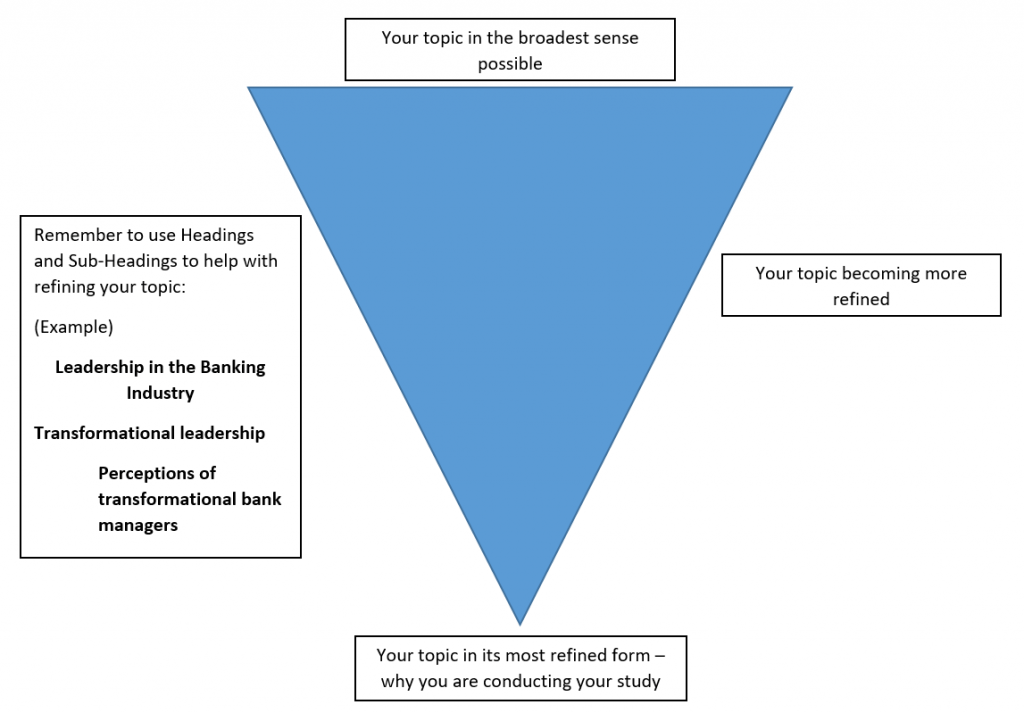Tackling Literature Review Organization
Most universities do you the favor of providing a template or checklist to assist in building your dissertation, which is incredibly helpful when you are unsure about what goes where. However, very often this helpful information seems to dry up when it comes to assembling your literature review. Most universities will provide you with section headings such as: Introduction, Literature Search Strategy/Documentation, and Theoretical/Conceptual Framework. Then comes the kicker: “Literature related to variables and concepts.” This is where many students run into an issue with their literature review, namely, how do you go about organizing the literature?
The best way to go about organizing your literature review is to think about in terms of an inverted triangle. The broad base at which you are starting is your topic in its most general sense. This generally includes the basic history and the most important seminal works regarding your topic. For example, if you are studying perceptions of leadership styles in the banking system, this is where you are going to write about the basics of leadership styles, devoting headings to transformational, transactional, and laissez-faire leadership styles. As you work your way through your literature, you want to become more refined, narrowing the scope of the articles you are reviewing to the point where you are setting up your study as the next obvious step in the progression of the previous literature. That is really what the literature review is all about: honing your literature to the fine point that is your study. As you do this, remember that headings are your friend, as they help you to narrow the focus of your chapter.
Below is a visual guide to assist you with organizing your literature review
[/et_pb_text][/et_pb_column][/et_pb_row][/et_pb_section]

We work with graduate students every day and know what it takes to get your research approved.
- Address committee feedback
- Roadmap to completion
- Understand your needs and timeframe
